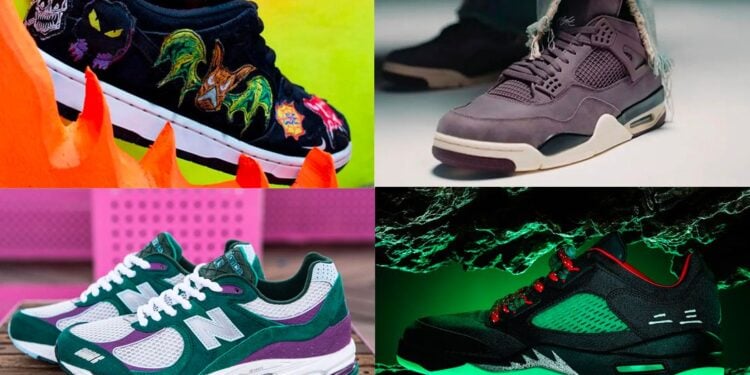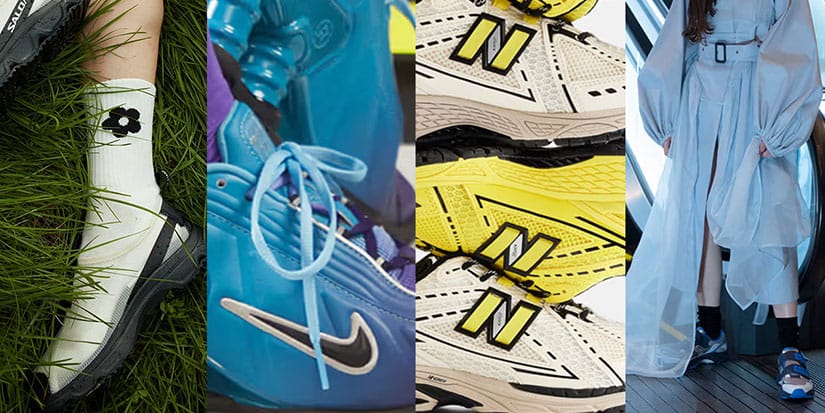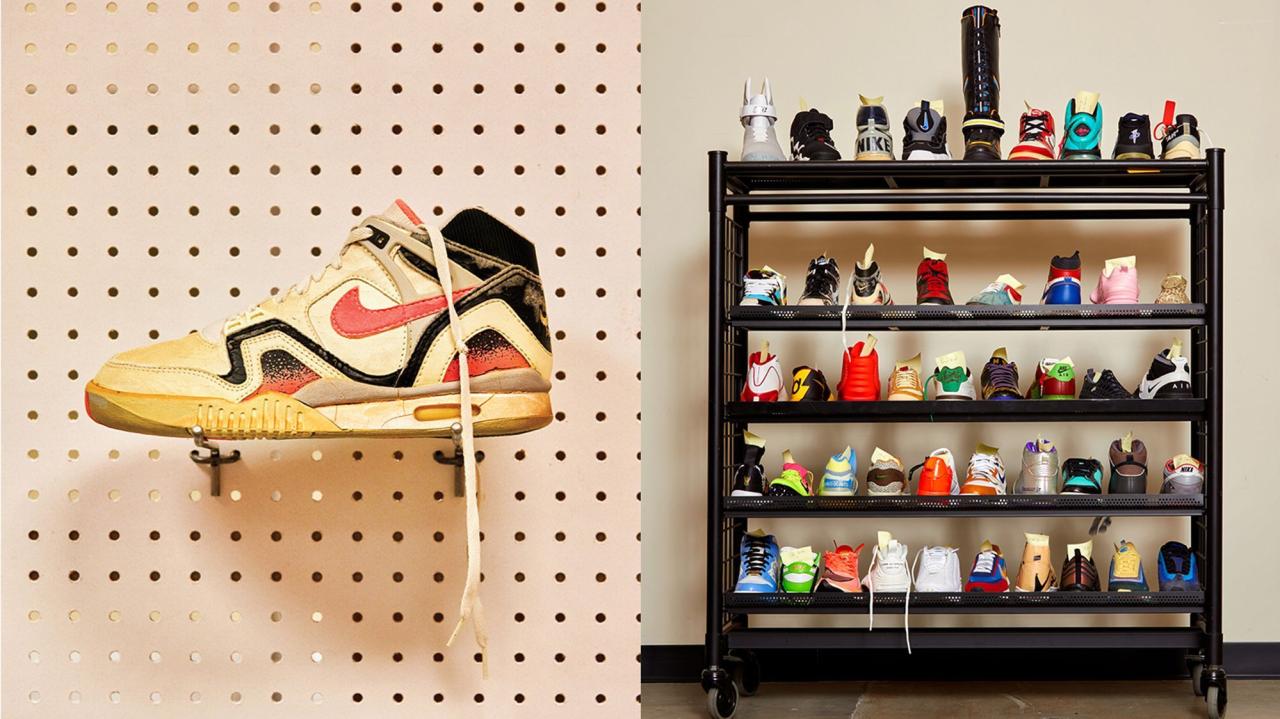The sneaker world is no longer just about performance metrics, iconic athletes, or streetwear dominance. A powerful new variable has entered the equation, fundamentally altering how brands design, produce, and market their products: sustainability. This green revolution has found its most potent and visible expression in the realm of collaborations. Sustainable sneaker collabs represent a thrilling convergence of high-profile influence, creative design, and a genuine commitment to planetary health. They are not merely limited-edition releases; they are powerful statements, educational tools, and catalysts for industry-wide change. This deep dive explores how these partnerships are dismantling old paradigms, the key players leading the charge, the innovative materials they employ, and the undeniable impact they are having on both the market and the environment.
A. The Critical Rise of Eco-Conscious Consumerism
To understand why these collaborations are so significant, one must first appreciate the seismic shift in consumer attitudes. The modern buyer, particularly within the influential Millennial and Gen Z demographics, is increasingly informed and conscientious.
A. The Demand for Transparency: Today’s consumers don’t just want a product; they want a story. They demand to know where materials come from, who made them, and what the environmental footprint of the entire process is. They use their purchasing power to support brands that align with their values, boycotting those that don’t.
B. The Influence of Climate Awareness: With climate change a constant feature in global discourse, a sense of urgency has permeated popular culture. People are actively seeking ways to reduce their personal impact, and their fashion choices are a major part of that journey.
C. The Hype as a Megaphone: Sneaker collaborations are inherently hype-driven events. By injecting sustainability into this hype cycle, brands can broadcast an eco-friendly message to millions of eager followers, achieving a level of visibility that a standalone sustainable product line might never garner. It makes “green” desirable and cool.
B. Deconstructing the “Sustainable” Sneaker: More Than Just Materials
When a collaboration is labeled “sustainable,” it can encompass a wide range of practices. It’s a holistic approach that looks at the entire lifecycle of the product.
A. Material Innovation (The Foundation): This is the most visible aspect. It involves moving away from virgin plastics and petroleum-based synthetics.
* Recycled Polyester (rPET): Sourced from post-consumer plastic bottles, this material is a staple in sustainable uppers, reducing plastic waste and requiring less energy to produce than virgin polyester.
* Natural and Renewable Materials: Organic cotton (grown without toxic pesticides), hemp (requires minimal water and no pesticides), and bamboo (fast-growing and renewable) are popular choices for laces, linings, and even knit uppers.
* Plant-Based Alternatives: Piñatex (made from pineapple leaf fibers), Mylo™ (a mushroom-based leather alternative), and cactus leather are groundbreaking biomaterials that offer a cruelty-free and low-impact option to traditional leather.
* Recycled Rubber: Using recycled rubber from old tires or production waste for outsoles significantly reduces the demand for virgin rubber and its associated environmental cost.
* Other Waste Streams: Some collaborations get incredibly creative, using everything as recycled ocean plastic to discarded fishing nets.
B. Circular Design Principles: True sustainability thinks about the end of a product’s life from the very beginning.
* Modularity: Designing sneakers that can be easily disassembled allows for components to be repaired, replaced, or recycled separately, drastically reducing waste.
* Durability: Moving away from the “fast fashion” model by creating well-constructed, timeless designs that last for years, not seasons.
* Take-Back Programs: Brands like adidas and Nike have implemented programs where old sneakers can be returned to be ground down and given new life as material for playgrounds, new shoes, or other products (a process often called “upcycling” or “downcycling”).
C. Ethical and Social Responsibility: Sustainability isn’t just environmental; it’s social. This involves ensuring fair wages, safe working conditions, and ethical treatment of workers throughout the supply chain. Many collaborations highlight these ethical certifications.
C. Spotlight on Pioneering Sustainable Sneaker Collaborations
Several key partnerships have set the benchmark, proving that sustainability and high demand can go hand-in-hand.
A. adidas x Parley for the Oceans: This is arguably the partnership that brought the concept of sustainable collabs into the mainstream. Since 2015, adidas and Parley have been transforming plastic waste intercepted from marine environments into high-performance sneakers like the UltraBoost. They have produced millions of pairs, preventing thousands of tons of plastic from entering the oceans and setting a massive precedent for the industry.
B. Nike x Space Hippie: This was Nike’s radical exploration of “space waste” on Earth. The collection utilized a high percentage of recycled materials, including what Nike calls “Space Waste Yarn,” made from recycled plastic bottles, t-shirts, and factory scrap. The Crater Foam in the midsole incorporated standard Nike foam and about 15% Nike Grind rubber from recycled sneakers. It was a masterclass in using a collaboration to showcase a portfolio of sustainable innovations.
C. Allbirds x Various Brands (adidas, Nordstrom): Allbirds built its entire brand on a foundation of sustainable materials like merino wool, sugarcane-based SweetFoam™, and tree fiber. Their collaborations are fascinating because they force bigger brands to adapt to their sustainable standards. The “Allbirds for adidas” project aimed to create the lowest carbon footprint performance shoe ever, demonstrating a knowledge-sharing model that benefits the entire sector.
D. Veja x Multiple Collaborations (Mansur Gavriel, Madhappy): The French brand Veja has been a quiet leader in sustainable sneakers for years, using organic cotton, wild rubber from the Amazon, and recycled plastic bottles. Their collaborations with fashion and lifestyle brands like Mansur Gavriel introduce their ethically-minded products to new, style-conscious audiences, proving that eco-friendly shoes can be incredibly chic.
E. Converse Renew x Your Green: The Converse Renew line focuses on creating classic Chuck Taylors from recycled materials. Their collaborations often involve artists and designers who reimagine the iconic silhouette using canvas made from 100% recycled polyester or blends containing recycled cotton. It’s a powerful statement on rethinking a classic.
D. The Tangible Benefits: Why These Collaborations Are a Win-Win-Win
The impact of these projects extends far beyond the immediate sales figures.
A. For the Brands:
* Enhanced Brand Image & Credibility: Associating with a genuine sustainability mission builds immense goodwill and trust with consumers.
* Risk Mitigation: Future-proofing their business against increasing environmental regulations and resource scarcity.
* Innovation Catalyst: Collaborations often serve as low-risk R&D labs. Technologies and processes pioneered in a limited collab can be scaled to mainline products.
* Access to New Markets: They attract the growing demographic of eco-conscious consumers who may not have engaged with the brand otherwise.
B. For the Collaborators (Artists, Designers, NGOs):
* Amplified Message: Environmental organizations like Parley gain an unprecedented platform to spread their message to millions.
* Creative Challenge: Designers are pushed to innovate within new constraints, leading to groundbreaking and unique products.
* Revenue for Cause: Many partnerships involve profit-sharing arrangements that directly fund the collaborator’s environmental or social missions.
C. For the Consumer:
* Ethical Consumption: The ability to participate in hype culture without the accompanying guilt, making a positive choice with their purchase.
* Educational Value: These sneakers act as conversation starters, educating wearers and their peers about material innovation and environmental issues.
* High-Quality Product: Often, these sustainably-made sneakers are of exceptional quality, utilizing advanced, durable materials.
D. For the Planet:
* Reduced Waste: Diverting plastic bottles, fishing nets, and manufacturing scrap from landfills and oceans.
* Lower Carbon Footprint: Using recycled materials almost always requires less energy and water than processing virgin resources.
* Biodiversity Conservation: Sourcing materials like wild rubber supports the preservation of rainforests and the economic stability of the communities within them.
E. Navigating the Challenges and the “Greenwashing” Pitfall
Despite the progress, the path is not without its obstacles. The biggest threat to this movement is inauthenticity.
A. The Scourge of Greenwashing: Some brands may engage in “greenwashing” – making exaggerated or false claims about the environmental benefits of a product to capitalize on the trend. A collaboration might highlight one recycled component while the rest of the shoe is conventionally made. Consumers are becoming increasingly savvy at spotting this and demand full transparency.
B. The Cost and Complexity: Sourcing innovative materials and overhauling supply chains is expensive and logistically challenging. This often results in a higher retail price for the end product, which can be a barrier for some consumers.
C. The Scale Paradox: While a limited-edition collaboration is excellent for raising awareness, the real environmental impact will only come when these sustainable practices are adopted across the board for millions of standard, non-hyped products.
D. The End-of-Life Question: While materials may be recycled, creating a truly circular product that can be fully recycled into a new sneaker of equal quality remains a significant technical challenge for the entire industry.
F. The Future of Sustainable Sneaker Collaborations
The trajectory is clear: sustainability will move from a niche feature to a non-negotiable standard. Future collaborations will likely focus on:
A. Radical Transparency: Using blockchain technology or QR codes to provide a verifiable, immutable record of a shoe’s entire supply chain, from source to store.
B. Biodegradability: The next frontier is developing high-performance sneakers that can safely and completely biodegrade at the end of their life, returning nutrients to the earth rather than sitting in a landfill for centuries.
C. Carbon-Neutral Production: Collaborations will not just focus on materials but on the entire carbon footprint of the production process, aiming for net-zero emissions.
D. Social Impact Stories: Future projects will place even greater emphasis on the people behind the products, highlighting the artisans and communities benefited by ethical sourcing.
Conclusion: A Step in the Right Direction
Sustainable sneaker collaborations are far more than a passing trend. They are a powerful microcosm of the larger transformation required across the global fashion industry. By marrying the immense cultural power of sneaker hype with genuine innovation and environmental responsibility, these partnerships are doing something remarkable: they are making sustainability aspirational. They prove that consumers don’t have to choose between style and conscience. While challenges remain, particularly around scale and greenwashing, each successful collaboration sets a new benchmark, pushes the boundaries of what’s possible, and educates a massive audience. They represent a hopeful, tangible step towards a future where every kick is a conscious one, and where the shoes we wear are a testament not just to our style, but to our respect for the planet.














